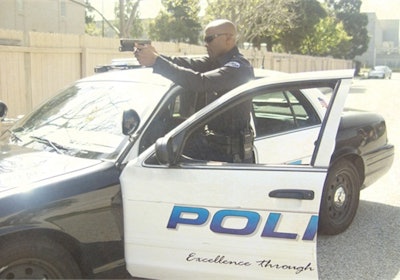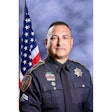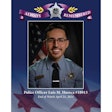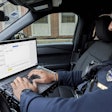
The police pursuit through crowded city streets and highways has long been a staple of Hollywood action thrillers. If the cop is the story's hero, the bad guy ends up trapped inside his smashed car as it explodes in flames. If the villain is the protagonist, he skillfully eludes the pursuing police cars as they crash into each other in the intersection.
Like much of what scriptwriters produce for entertainment, most of these scenes aren't contingent upon reality. Anyone who has watched an actual televised pursuit in progress knows that. So do you.
Unfortunately, some of the drivers who have trouble distinguishing fantasy from reality think they're actually going to outrun your police cars, your radios, and your helicopters. So they try. Once their evasive driving begins to endanger public safety, you could have a serious decision to make about how you end that risk. For the third time in 10 years, the U.S. Supreme Court has given us guidance on the kinds of circumstances that may justify the use of deadly force to stop a dangerous driver.
Brosseau v. Haugen (2004)
Officers in Puyallup, Wash., went in foot pursuit of felony suspect Kenneth Haugen. Following more than 30 minutes of chase through a residential neighborhood, an officer caught up with Haugen as he got into a Jeep in his driveway. She pointed her handgun at him and banged on his window, but he started the Jeep and began driving away.
Fearful for the safety of officers on foot nearby and of citizens who might be in Haugen's path, the officer fired one round through the rear window of the Jeep. Haugen continued driving for a half-block before realizing he had been shot and pulling over. He survived and sued the officer for using excessive force. Although the Ninth Circuit appeals court denied the officer summary judgment, the Supreme Court reversed.
Said the court, "Where the officer has probable cause to believe that the suspect poses a threat of serious physical harm, either to the officer or to others, it is not constitutionally unreasonable to prevent escape by using deadly force." On the facts of this case, the court decided the officer was entitled to immunity from suit.
Scott v. Harris (2007)
Deputy sheriffs in Coweta County, Ga., began a pursuit when Victor Harris refused to yield for a traffic stop. The patrol car's video camera showed that during the 10-mile pursuit at up to 85 miles per hour, Harris forced numerous other cars to the shoulder and engaged in hazardous maneuvers that placed "police officers and innocent bystanders alike at great risk of serious injury."
A deputy sheriff ended the pursuit by bumping the rear of Harris's car, sending it into a crash that left Harris a 19-year-old quadriplegic. He sued, claiming excessive force in violation of the Fourth Amendment. The federal trial court and the Eleventh Circuit appeals court ruled against the deputies on the issue of qualified immunity, essentially blaming the deputies for creating the dangers by continuing a pursuit they could easily have abandoned.
Reversing, the Supreme Court found it anomalous to fault deputies for doing their jobs, when "It was Harris, after all, who intentionally placed himself and the public in danger by unlawfully engaging in the reckless, high-speed flight that ultimately produced his injuries."
The court issued what it called "a more sensible rule: A police officer's attempt to terminate a dangerous high-speed car chase that threatens the lives of innocent bystanders does not violate the Fourth Amendment, even when it places the fleeing motorist at risk of serious injury or death."
Plumhoff v. Rickard (2014)
Given the rulings in both Brosseau and Scott, you might think all lower courts would understand that deadly force is not excessive when reasonably employed to end a pursuit that represents a grave public safety risk. Unfortunately, if you thought that, you'd be wrong.
Officers in West Memphis, Ark., pursued a car driven by Donald Rickard after he fled from a traffic stop. The chase reached speeds over 100 miles per hour, forcing several vehicles to alter course to avoid collision. Finally cornered in neighboring Tennessee, Rickard collided with a police car and accelerated against the cruiser, trying to get away. Officers approached and pounded on his window, but Rickard persisted in his efforts to escape.
Officers fired three shots into Rickard's car, but he managed to maneuver his car into a street and resume his flight. Other officers fired 12 more shots toward the car. Rickard then lost control and crashed. He and his passenger died of gunshot wounds and crash injuries. Rickard's daughter sued.
The federal district judge refused to dismiss the lawsuit, and the Sixth Circuit appeals court affirmed that decision. The officers appealed to the Supreme Court, which unanimously reversed.
Citing its earlier decisions in both Brosseau and Scott, the court said this: "It is beyond serious dispute that Rickard's flight posed a grave public safety risk, and here, as in Scott, the police acted reasonably in using deadly force to end that risk."
Plaintiff's counsel argued that firing a total of 15 shots at Rickard's car was in itself excessive, but the court said, "We reject that argument. It stands to reason that, if police officers are justified in firing at a suspect in order to end a severe threat to public safety, the officers need not stop shooting until the threat has ended." (The court pointed out that the ruling might be different if initial shots had obviously incapacitated the suspect or if he had abandoned his flight or resistance, "But that is not what happened here.")
In a footnote in Plumhoff, the Supreme Court chided the federal judge for erroneously ruling that the officers had violated the Fourth Amendment. The judge wrongly asserted "that the danger presented by a high-speed chase cannot justify the use of deadly force because that danger was caused by the officers' decision to continue the chase." The Supreme Court called this assertion "irreconcilable with our decision in Scott," where the court had stressed that blame is to be placed where it belongs—on the criminal who resists submission to lawful authority and who chooses to put officers and the public at risk of death or serious injury by his or her unlawful and dangerous flight.
Your Policies May Vary
Unfortunately, too many pursued drivers kill and maim innocent citizens in intersection T-bone collisions. The risk of such tragedies has prompted officials in some jurisdictions to prohibit police pursuits altogether, or to restrict the circumstances under which they may be initiated or maintained.
The Supreme Court decisions summarized above merely hold that deadly force does not violate the Fourth Amendment when reasonably used to protect against serious public dangers. But the civil liability aspect of any use of force is not the only consideration when setting police policies, and your local policies may legitimately be more restrictive than the Constitution requires. When a driver flees your attempt to stop him, there's no time to consult policy manuals before taking action, so it's important that every officer know beforehand when to chase, and when not to.
Devallis Rutledge is a former police officer and veteran prosecutor who currently serves as special counsel to the Los Angeles County district attorney. He is the author of 12 books, including "Investigative Constitutional Law."
















